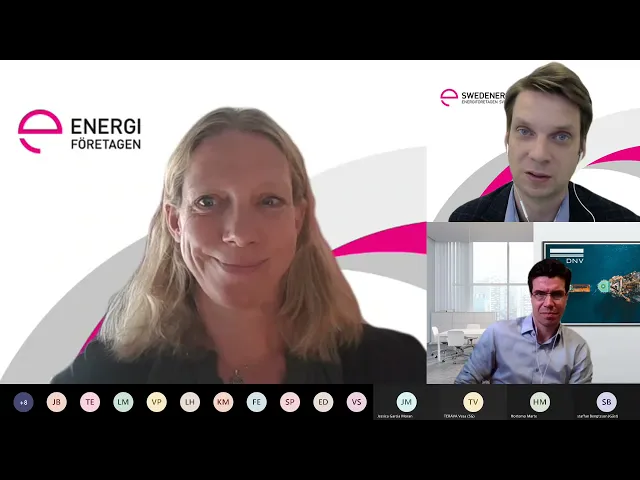
Nordenergis elektrifieringsstudie
Studien har genomförts av konsultföretaget DNV GL och har baserats på kriterier som Nordenergi har tagit fram. Elektrifieringsstudier från de fyra nordiska marknaderna i Danmark, Finland, Norge och Sverige har sammanställts. Enligt de fyra nationella studierna kommer elbehovet att öka med mer än 60 procent mellan 2020 och 2040. Vindkraft beräknas öka från 14 procent av elmixen 2020 till 40 procent 2050.
Vid lanseringen genomfördes ett webbinarium som går att se i efterhand här i vår Play-kanal.
Webinar: Make the Nordics carbon-neutral ASAP – launch of Nordic electrification study
Date and time: May 19th, 11 AM – 12:15 PM (online in Microsoft Teams - An invitation link will be sent no later than two days before the event).
In 2019, Nordenergi decided to commission a study on the opportunities and barriers of electrification in the Nordics, to contribute to the discussion on how Europe can become carbon-neutral by 2050. The power sector and increased electrification have a crucial role in delivering a decarbonised society, and joint planning is therefore, necessary. The Nordic power market is a frontrunner for cross-border collaboration with the creation of Nordel in 1962, the establishing of the Nordic Electricity Market forum in 2017, and Nord Pool, the world’s first true cross-border power exchange.
According to the four national studies the electricity demand will increase with more than 60 percent between 2020 - 2040. Wind power is estimated to increase from 14 percent of the electricity mix in 2020 to 40 percent in 2050. Please register ASAP to guarantee your spot at the webinar.
11:00-11:10
Introduction by Åsa Pettersson, chair of Nordenergi
11:10-11:40
Presentation of study by Gudmund Bartnes, DNV GL
11:40-12:15
Panel discussion regarding the study: Åsa Pettersson, Chair Nordenergi; NN - European Commission (TBC); Gudmund Bartnes, DNV GL; Kristian Ruby, Secretary General Eurelectric; Moderated by Daniel Wennick, Swedenergy
Electrification in the Nordics_executivesummary_19_05_2021.pdf















